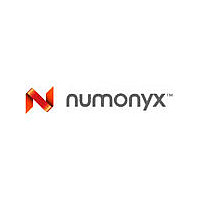JS28F320J3F75A NUMONYX, JS28F320J3F75A Datasheet - Page 9

JS28F320J3F75A
Manufacturer Part Number
JS28F320J3F75A
Description
PARALLEL NOR
Manufacturer
NUMONYX
Datasheet
1.JS28F320J3F75A.pdf
(66 pages)
Available stocks
Company
Part Number
Manufacturer
Quantity
Price
Company:
Part Number:
JS28F320J3F75A
Manufacturer:
MICRON
Quantity:
3 400
Company:
Part Number:
JS28F320J3F75A
Manufacturer:
MICRON35
Quantity:
54
Part Number:
JS28F320J3F75A
Manufacturer:
INTEL
Quantity:
20 000
Numonyx
2.0
March 2010
208032-02
®
Embedded Flash Memory (J3 65 nm) Single Bit per Cell (SBC)
Functional Overview
The J3 65 nm SBC family contains high-density memory organized in any of the
following configurations:
These devices can be accessed as 8- or 16-bit words. See
Diagram for 32-, 64-, 128-Mbit” on page 11
A 128-bit Protection Register has multiple uses, including unique flash device
identification.
The J3 65 nm SBC device includes new security features that were not available on the
(previous) 0.13µm versions of the J3 family. These new security features prevent
altering of code through different protection schemes that can be implemented, based
on user requirements.
The J3 65 nm SBC optimized architecture and interface dramatically increases read
performance by supporting page-mode reads. This read mode is ideal for non-clock
memory systems.
Its Common Flash Interface (CFI) permits software algorithms to be used for entire
families of devices. This allows device-independent, JEDEC ID-independent, and
forward- and backward-compatible software support for the specified flash device
families. Flash vendors can standardize their existing interfaces for long-term
compatibility.
The Scalable Command Set (SCS) allows a single, simple software driver in all host
systems to work with all SCS-compliant flash memory devices, independent of system-
level packaging (e.g., memory card, SIMM, or direct-to-board placement). Additionally,
SCS provides the highest system/device data transfer rates and minimizes device and
system-level implementation costs.
A Command User Interface (CUI) serves as the interface between the system processor
and internal operation of the device. A valid command sequence written to the CUI
initiates device automation. An internal Write State Machine (WSM) automatically
executes the algorithms and timings necessary for block erase, program, and lock-bit
configuration operations.
A block erase operation erases one of the device’s 128-KB blocks typically within one
second, independent of other blocks. Each block can be independently erased 100,000
times. Block erase suspend mode allows system software to suspend block erase to
read or program data from any other block. Similarly, program suspend allows system
software to suspend programming (byte/word program and write-to-buffer operations)
to read data or execute code from any other block that is not being suspended.
Each device incorporates a Write Buffer of 256-Byte (x8 mode) or 256-Word (x16
mode) to allow optimum programming performance. By using the Write Buffer data is
programmed more efficiently in buffer increments.
Memory Blocks are selectively and individually lockable in-system. Individual block
locking uses block lock-bits to lock and unlock blocks. Block lock-bits gate block erase
and program operations. Lock-bit configuration operations set and clear lock-bits (using
the Set Block Lock-Bit and Clear Block Lock-Bits commands).
• 16-MB or 8-MW (128-Mbit), organized as one-hundred-twenty-eight 128-KB erase
• 8-MB or 4-MW (64-Mbit), organized as sixty-four 128-KB erase blocks.
• 4-MB or 2-MW (32-Mbit), organized as thirty-two 128-KB erase blocks.
blocks.
for further details.
Figure 1, “Memory Block
Datasheet
9












